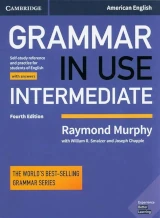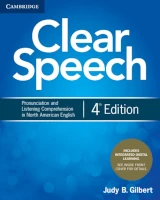Vocabulary: Using Normal, Typical and Regular Correctly –
English has many words that seem similar but carry important differences in meaning and usage. Three such words—normal, typical, and regular—are often confused by English learners. While these words can sometimes be used interchangeably, they also have important differences. In fact, it is possible to accidentally hurt or offend someone if you use them incorrectly!
Understanding both the dictionary definitions and common usages of these three words will help you communicate more clearly and sensitively. Sound interesting? Then read on:
Normal: Be Careful with This One!
The word normal refers to what is considered standard or expected within a given situation. It often implies that something conforms to a widely accepted idea of how things “should” be. For example:
⇒ “It is normal to feel nervous before taking an important test.”
⇒ “Doctors say it is normal for babies to cry.”
Here’s the difficulty: While normal can describe patterns, behaviors, or conditions that are common or typical, it can also be insensitive or offensive in some situations when describing people. Let me explain:
 By saying someone is “normal” or “not normal,” your audience may understand that you think that person is “better” or “worse” than other people. It often carries the message that the person you’re talking about is somehow weird, wrong, or lower in value than someone else. This kind of language can unintentionally hurt people whose experiences or qualities are different from the majority.
By saying someone is “normal” or “not normal,” your audience may understand that you think that person is “better” or “worse” than other people. It often carries the message that the person you’re talking about is somehow weird, wrong, or lower in value than someone else. This kind of language can unintentionally hurt people whose experiences or qualities are different from the majority.
For example, consider these two statements:
⊗ Insensitive: “It’s not normal for adults to live with their parents.”
⇒ Better: “It’s not typical for adults to live with their parents in some cultures.”
The first sentence implies a judgment that living with parents as an adult is incorrect or bad in some way, while the second simply states the fact that doing so is uncommon in some places.
Here’s the rule to remember: When in doubt, use typical or not typical (or if you want to be fancy, even atypical) to describe people—you may avoid misunderstanding if you do.
Typical: A Great Word for Common Trends
The word typical is used to describe things that commonly happen or that fit a recognized pattern. Unlike normal, it does not necessarily suggest that something is right or wrong—it simply describes what is most common. For example:
⇒ “It is typical for students to receive homework assignments.”
⇒ “A typical winter in Canada is very cold.”
This word is useful when discussing behaviors, habits, or characteristics that are statistically frequent. Typical is usually a safer, simpler choice—it helps avoid the suggestion that something or someone is incorrect or bad simply by being different:
⊗ Insensitive: “A normal teenager in America enjoys social media.” (This could imply that those who don’t are somehow unusual in a negative way.)
⇒ Better: “A typical teenager in America enjoys social media.” (This suggests that many do, but some might not.)
Regular: A Word for Routine and Frequency
Though it may seem similar to the other two words, regular is often used quite differently. Rather than being a comparison to “what the group does,” regular usually describes something that happens repeatedly or according to a set pattern. It’s a great choice to describe habits, schedules, or rules (or the lack of them).
For example:
⇒ “She goes for a 5-mile run on a regular basis.”
⇒ “Coffee without cream is my regular morning drink.”
⇒ “This store’s regular hours are 9 AM to 6 PM.”
⇒ “I don’t have a regular dentist, but I’m hoping to find one.”
Unlike the first two words, regular does not describe whether something is common or expected. Instead, it focuses on consistency. If someone has a regular routine, it means they follow a schedule, not necessarily that their behavior is common or that anyone thinks it’s a good or a bad thing.
I hope this vocabulary guide has been helpful!
If you’d like to learn more about how ESL Advantage tutoring can help you take your English skills to the next level, reach out to me today or connect through our Contact Form.
You may also enjoy this video I created about the differences between the words Say, Tell, Talk and Speak
Note: As an Amazon Associate, I earn from qualifying purchases, at no additional cost to you. Recommended resources are carefully selected and help support the operation of my blog, so thank you for clicking!







